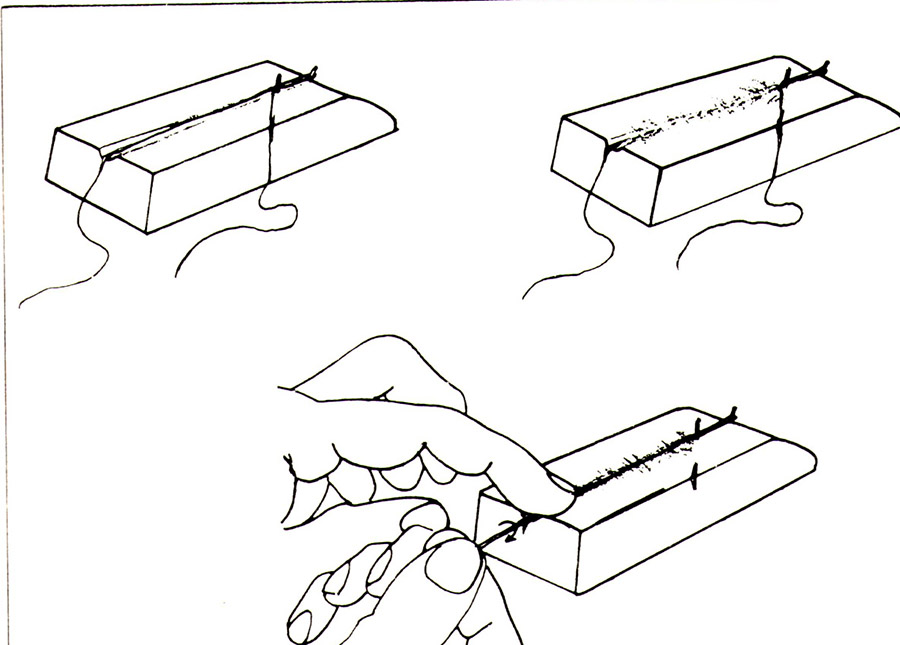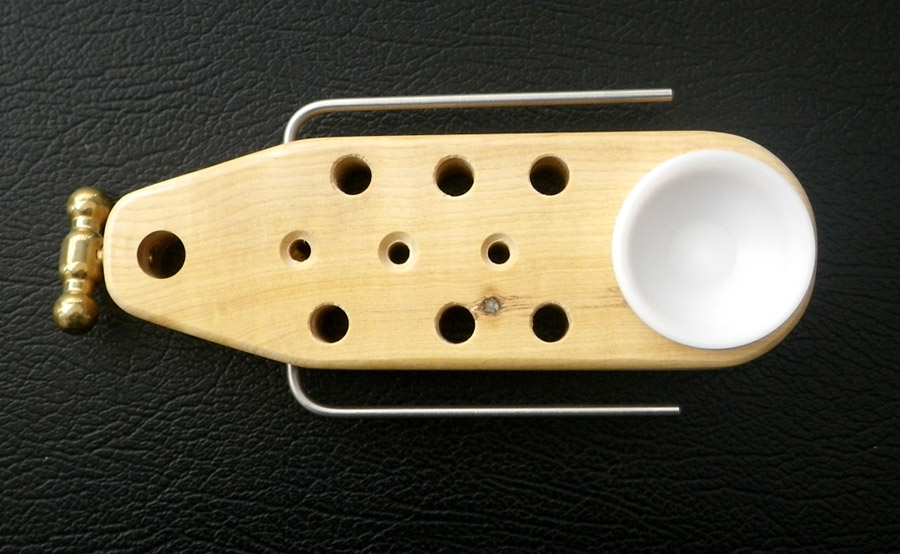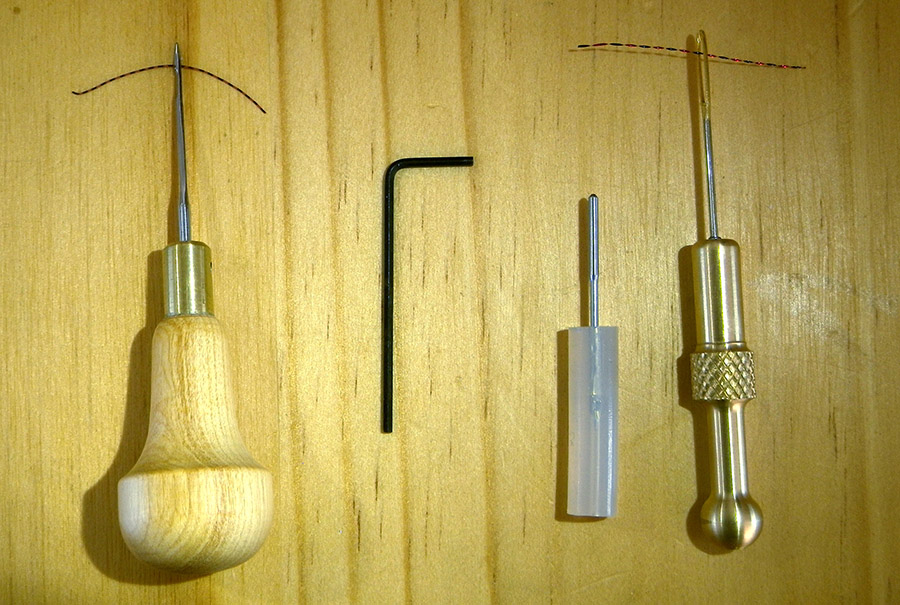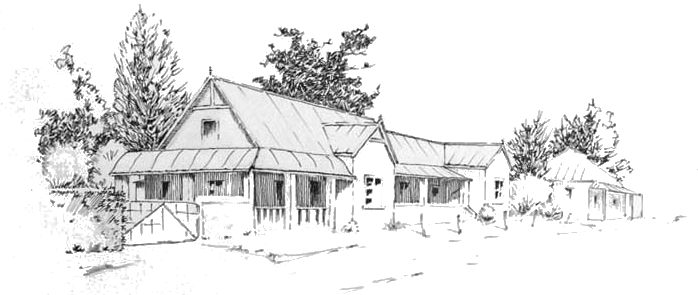In the article I wrote for this website about Jay Smit of Durban and his JVice I mentioned one of the fly tying tools which he has developed which, to me, summed up his innovative engineering design ability.
http://www.tomsutcliffe.co.za/fly-fishing/fly-tying/item/213-ed-herbst-reviews-the-j-vice.html
Click in images to enlarge

Jay Smit fishing at Sterkfontein Dam
This was his packer for creating spun deer hair patterns which greatly facilitates the speed and ease with which Muddler heads and bodies for flies like the DDD and the Rat Faced McDougal can be spun.
In March 2013he introduced his stand-alone dubbing brush maker.

The J Vice Dubbing Brush Tool
This was a development of his dubbing brush maker kit which attaches to the vice and it once again sums up his ability to craft ingeniously designed and beautifully made tools which are a pleasure to work with, facilitate the speed with which one can tie flies and enhance the pleasure of doing so. I bought mine from Craig Thom’s Stream-X shop in Milnerton, Cape Town because I could not resist its beautiful combination of wood, brass and stainless steel it and I am slowly exploring its potential for tying small flies, such as my Sparse Brassie, rather than the mega-marine streamers which most tyers use it for.
http://www.tomsutcliffe.co.za/fly-fishing/fly-tying/item/994-the-sparse-brassie-by-ed-herbst.html
The concept of trapping material between, at first, two threads and then a piece of wire folded double is more than a century old and some historians attribute it to George Selwyn Marryat although it was F M Halford, with whom he collaborated, who first wrote about the dubbing loop in Floating Flies and How to Dress Them (1886)
At first, dubbing was applied to a piece of waxed thread on a trousered leg and then the thread was folded, trapping the dubbing between two layers of thread.
James Leisenring illustrates this in his 1971 book, The Art of tying the Wet Fly and Fishing the Flymph (Crown Publishers) but a friend and protégé, Dick Clark, then built a simple device, the Spinning Block to facilitate this process and it is illustrated in the book.

The illustration of the Dick Clark Spinning Block from James Leisenring’s book.
Leisenring would then store these sections of dubbed threads on cards.
In 1983 the concept of using fine wire to manufacture the “dubbing brush” was introduced in Czechoslovakia and they are sold commercially by Jan Siman who automated the Dick Clark Spinning Block with his Turbo Spinning Block
http://shop.siman.cz/art_turbo_spinning_block/instructions.pdf
Two years later, on 1 October 1985, American engineer Norman Norlander received a patent for his rotary vise and to extend the versatility of his vise he introduced the Dubbing Brush Table.
He has two excellent YouTube clips which illustrate the concept
https://www.youtube.com/watch?v=zWcFL49FMaI
https://www.youtube.com/watch?v=ujnyyU8Xd5I
Jay Smit incorporates this idea into his dubbing brush maker in that the dubbing brush table ingeniously drops away and there is a useful YouTube clip which illustrate the principle.

The dubbing brush with the table up (above) and dropped away below

https://www.youtube.com/watch?v=KyZLc8t5i8E
I have just received two recent additions to Jay's range, a tool rack which attaches to the vise stem and two versions of rubber leg threaders which I asked him to make for me. I am working on a foam beetle pattern in which the rubber legs are threaded through the body and ice dub is threaded through the shellback of the pattern to make it easier to spot and follow on the water.

Two views of the JVice tool caddy

The concept of Jay’s rubber leg threader is simple but beautifully executed - a handle, one made of wood and a less expensive one machined from brass, into which one can insert sewing machine needles of different sizes which are then held in place with a tiny Allen screw.

The JVice leg threaders which utilise commercially-available needles
The bigger needle shown here in the brass version is used in sewing leather and the end has to be machined to get it to fit but this would be ideal for threading large-diameter rubber leg material into big bass poppers.

The articulated bobbin rest, an optional accessory for the JVice
Another of my favourite JVice tools is the articulating bobbin rest which Jay developed with input from one of his clients, Duncan Nebbe, an engineer. There are several photographs in the accessories file on Jay’s website but I just flatten it towards me when I am not using my vise in rotary mode and this gives me more space around the fly.
Jay welcomes input on how he can improve his products and I suggested that he incorporates a small flat section on the handles of his leg threaders to prevent them from rolling around on the desk top.



